Author
|
Message

|
 Breeding Journal, Species: Elacatinus randalli
Thursday, August 22, 2013 10:54 AM
Breeding Journal, Species: Elacatinus randalli
Thursday, August 22, 2013 10:54 AM
( permalink)
Breeding Journal DataSheet
This first post should be updated regularly to include new information as events take place or changes are made to your system General Species: Elacatinus randalli Social Structure: male and female Size of Individuals: 1.5" Age of Individuals: unknown Date added to Tank: early June 2013 Broodstock Tank Details Size of Tank: 10gal plumbed into a 500gal system
Substrate Details: bare bottom
Filtration Details: wet/dry, fluidized sand bed, I-tech skimmer
Water Changes: 10% weekly
Water Temperature: 80-82
Lighting: overhead fluorescent
Lighting Cycle: on for 13hrs
Other Tank Inhabitants: none Broodstock Feeding Details Food Types: Rods Food FO blend, hikari mysis, PE mysis, cyclop-eeze wafer
Feeding Schedule: every 4hrs : Spawning Details Date of First Spawn: 8-14-13 Spawn Time of Day: morning Dates of Consecutive Spawns: none yet...too soon for a second spawn Courtship Details: did not see it Egg Size: 1mm Egg Color: opaque Egg Count: maybe 100-200 Hatch Details Hatch Date: 8-20-13 Hatch Time of Day: evening # Days after Spawn: 7 Larvae Description: slivers of glass, very active! larvae were hatched just by moving them to larval tank Consecutive Hatch Dates: Larval Tank Details Temperature: 80
Size of Larval Tank: 25gal round tub
Substrate Details: bare bottom
Other Tank Decor: none
Filtration Details: none
Lighting: overhead fluorescents
Lighting Cycle: 24hr
Water Changes: none until day 8 Larval Feeding Details Food Types: rotifers w/ rotigreen omega
Feeding Schedule: as needed Metamorphosis/Settlement Date of Settlement Start: Days after Hatch: Date of Settlement End: Description of Fry:
Grow-Out Tank Details Temperature: Size of Grow-Out Tank: Substrate Details: Other Tank Decor: Filtration Details: Lighting: Lighting Cycle: Water Changes: Size at Transfer: Age at Transfer: Grow-Out Feeding Details Food Types: Feeding Schedule: Additional Information (No Pictures or Videos in the Section Please) Miscellaneous Information: You will be required to provide photographic or video evidence in this thread of each event submitted for the MBI Program.
If your thread does not contain these photos the MBI Committee will not be able to approve your reports. PHOTOS AND VIDEO S MUST BE PLACED IN ADDITIONAL POSTS, NEVER IN THE FIRST POST IN A JOURNAL.
Jonathan Foster
FishEye Aquaculture
|
|
|
 Re: Breeding Journal, Species: Elacatinus randalli
Thursday, August 22, 2013 10:58 AM
Re: Breeding Journal, Species: Elacatinus randalli
Thursday, August 22, 2013 10:58 AM
( permalink)
This spawning pair was acquired from a friend who was breaking down their reef system. I was told the fish originated form Proaquatix a couple years ago via his LFS, that is why I am assuming they are E. randalli (Proaquatix) instead of E. figaro (ORA). If anyone thinks different, please let me know. Picture of broodstock: 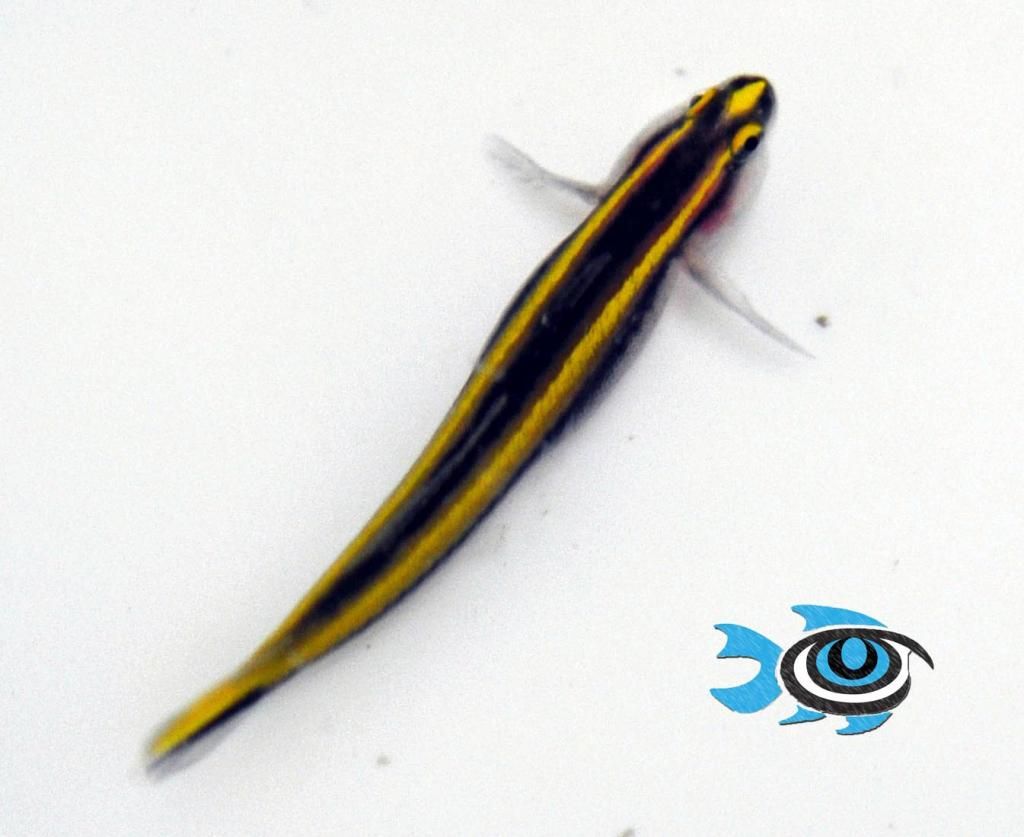 Spawn: 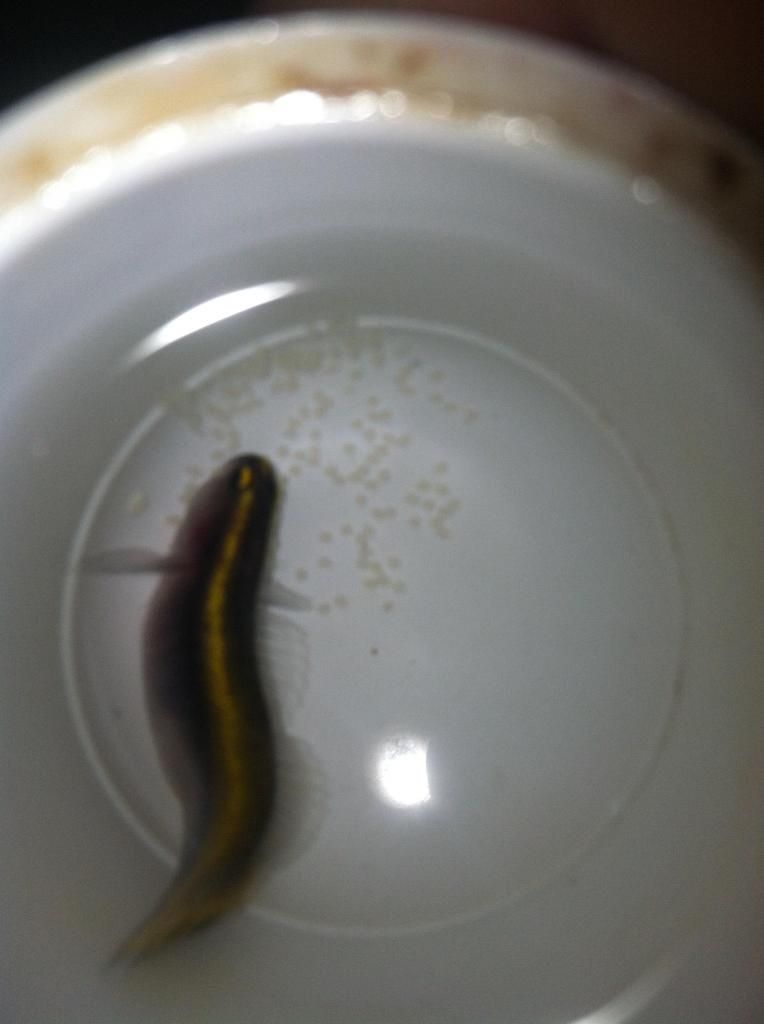 Video of hatch: 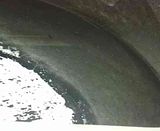
Jonathan Foster
FishEye Aquaculture
|
|
|
 Re: Breeding Journal, Species: Elacatinus randalli
Monday, August 26, 2013 11:24 AM
Re: Breeding Journal, Species: Elacatinus randalli
Monday, August 26, 2013 11:24 AM
( permalink)
The pair, together. I love this species! 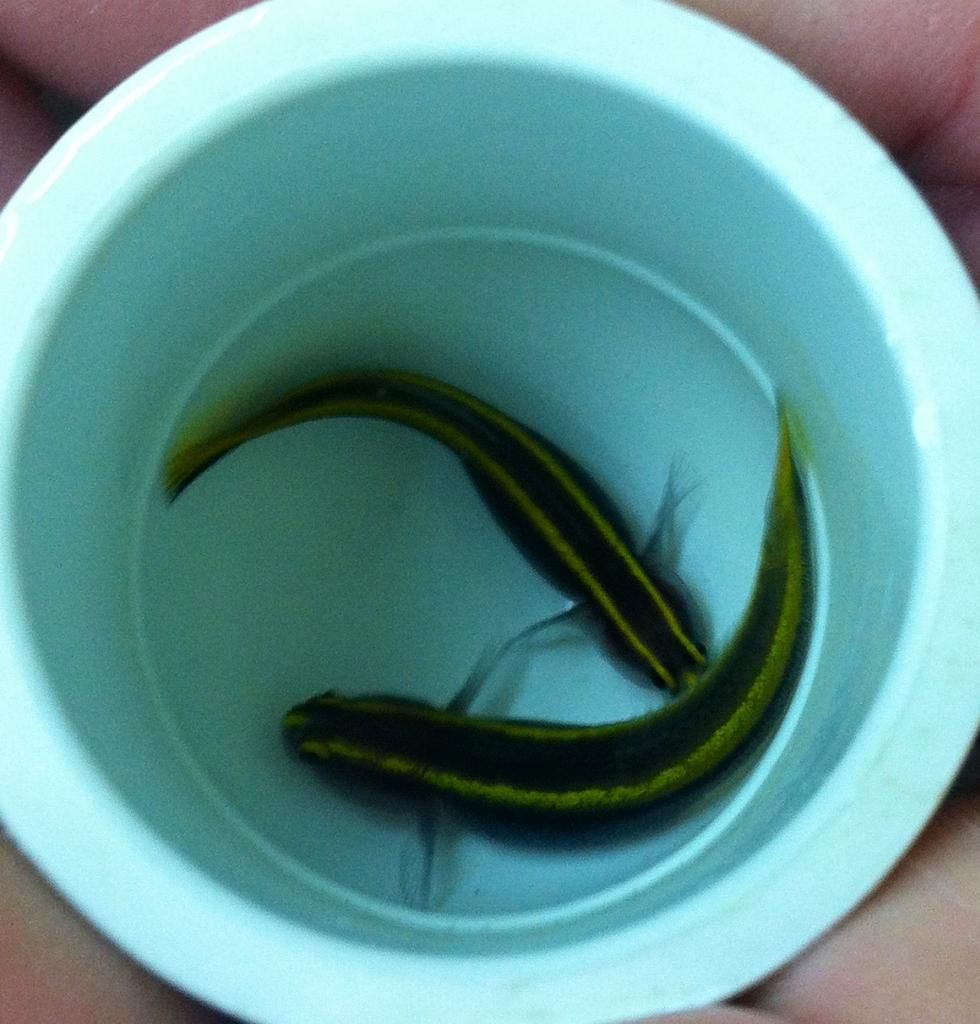
Jonathan Foster
FishEye Aquaculture
|
|
|
 Re: Breeding Journal, Species: Elacatinus randalli
Tuesday, November 26, 2013 6:52 PM
Re: Breeding Journal, Species: Elacatinus randalli
Tuesday, November 26, 2013 6:52 PM
( permalink)
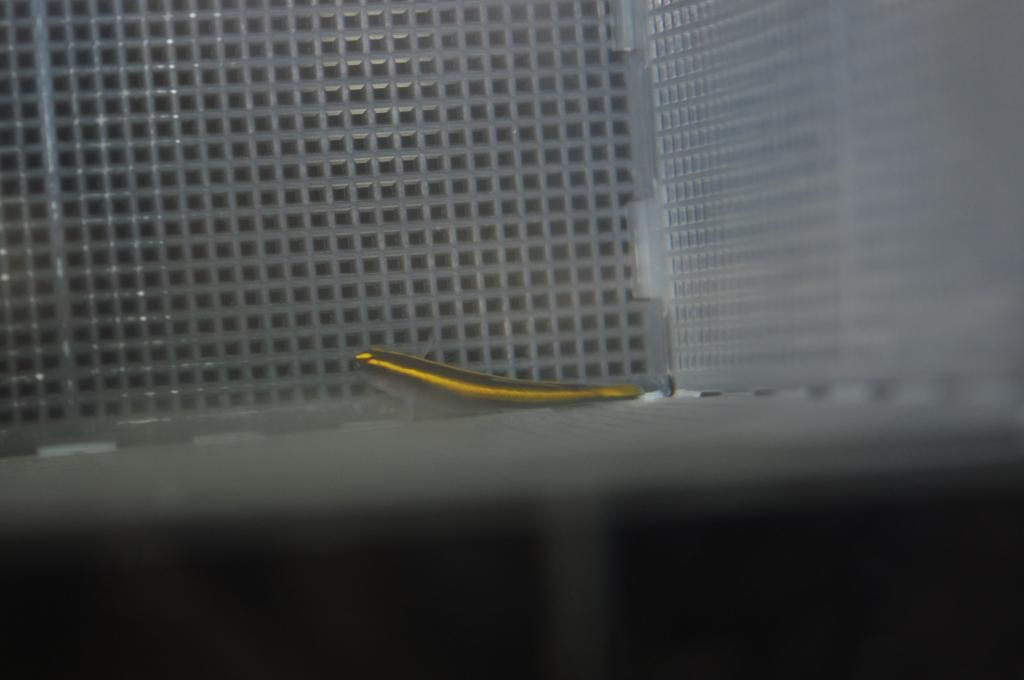 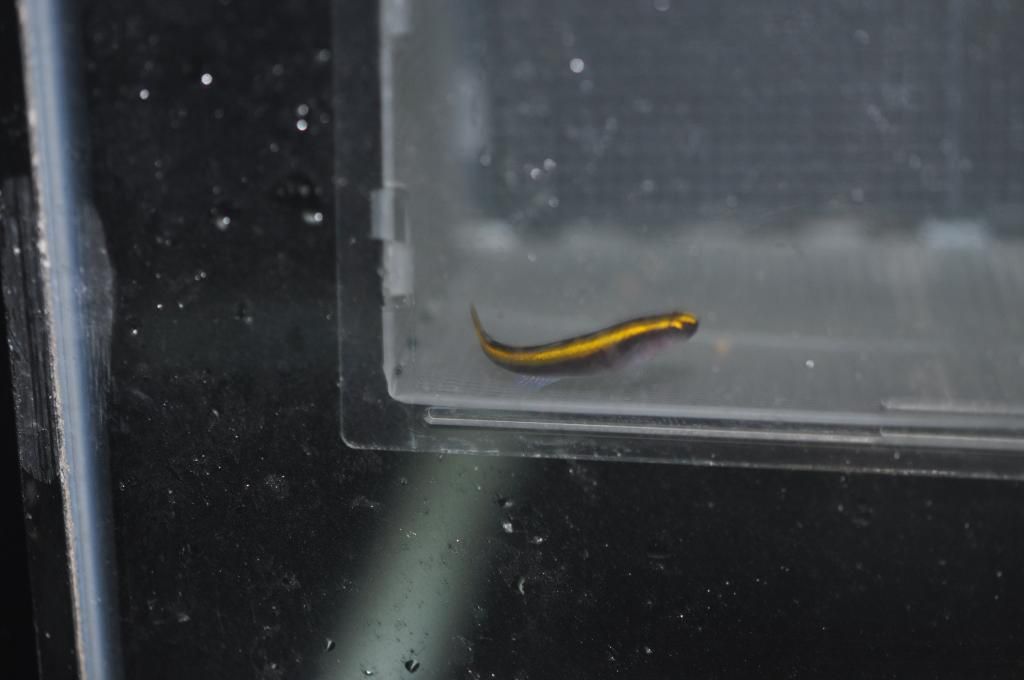 Some side shots of broodstock...needed confirm (or refute) the species ID. Again, stock is from Proaquatix, so my assumption is E. randalli, per their website. I welcome your opinion...after all, it would be nice to market this beautiful species properly.
Jonathan Foster
FishEye Aquaculture
|
|
|
 Re: Breeding Journal, Species: Elacatinus randalli
Wednesday, November 27, 2013 4:19 PM
Re: Breeding Journal, Species: Elacatinus randalli
Wednesday, November 27, 2013 4:19 PM
( permalink)
very nice fish, I'm no help in the ID but just wanted to comment on what a cool fish 
|
|
|
 Re: Breeding Journal, Species: Elacatinus randalli
Friday, January 3, 2014 4:57 PM
Re: Breeding Journal, Species: Elacatinus randalli
Friday, January 3, 2014 4:57 PM
( permalink)
OK, so according to Humann's book, the diagnostic between randalli and figaro, beyond the geographic separation, is this. E. randalli is said to have a "thin bluish stripe (that) runs from under each eye to behind the pectoral fin". This is not noted for E. figaro. In Humann's book, you can clearly see the blue stripe in one of the two fish photographed, but not the other. I cannot see the blue-ish stripe on either of your fish, but that could be the angle of the camera / lighting. So this may require your personal observation to make the final diagnostic. Now, we know that at least two species have color variants (Sharknose and Neons) so that could further muddy things, but I discovered pretty quickly several good photos of Randalli that show the blue stripe. Here's some links: http://www.natuurlijkmooi.net/images/elaranc.jpg http://reefguide.org/pix/thumb2/yellownosegoby2.jpg http://upload.wikimedia.org/wikipedia/commons/thumb/1/11/Elacatinus_randalli_bonaire.JPG/400px-Elacatinus_randalli_bonaire.JPG http://www.luizrocha.com/fish/E_randalli.jpg And here are some E. figaro links http://upload.wikimedia.org/wikipedia/commons/6/60/Elacatinus_figaro_RZPG.jpg http://www.sgreefclub.com/forum/uploads/post-36-1080104829.jpg http://gobiidae.com/sp_pics/ELACATINUS_PRIDIS_01_JLG.gif http://reefbuilders.com/files/2011/03/yellowline-goby.jpg Now, my understanding is that E. figaro is no longer accesible as a wild caught fish since it's blocked from export in Brazil (it's native waters). I also think that, from what I can see, your fish look more like E. figaro than E. randalli...and if that's truly what you have (E. figaro) that's great because if we lose it in captive breeding we'll never get it back. So the questions to ask would include going back to Proaquatix and seeing if they know the provenance of their broodstock. Note that ORA produces E. figaro, not E. randalli - http://www.orafarm.com/products/fish/gobies/yellowline/. Also note that Proaquatix's one small photo does not show the blue line of E. randalli. - http://proaquatix.com/html/goby-yellownose.html I wonder if you have E. figaro, and not E. randalli.
|
|
|
 Re: Breeding Journal, Species: Elacatinus randalli
Friday, January 3, 2014 10:53 PM
Re: Breeding Journal, Species: Elacatinus randalli
Friday, January 3, 2014 10:53 PM
( permalink)
 Originally Posted by mPedersen
Now, my understanding is that E. figaro is no longer accesible as a wild caught fish since it's blocked from export in Brazil (it's native waters).
That is correct ! E. figaro is listed as endangered in Brazil and hence it can not be legally exported. However I have seen it offered for sale around here as E. oceanops and E. randalli some time ago as I have seen Gramma brasiliensis (also endemic and can not be exported) offered as G. loreto... So, it can not be legally exported but do not take this as a criteria to exclude E. figaro as a possibility when found at wholesalers as it may still happen with mislabled illegally exported fishes. Back on track, these fishes look more like E. figaro.
|
|
|
|